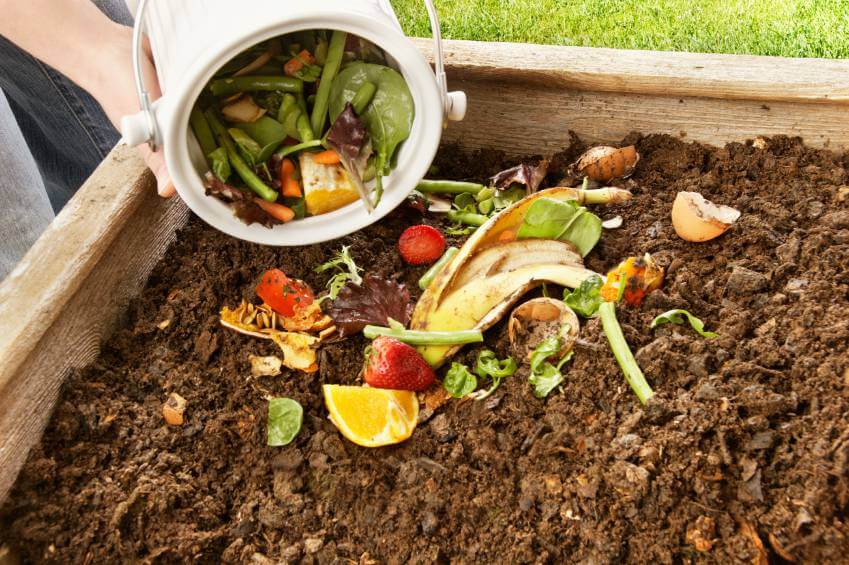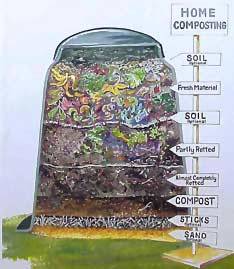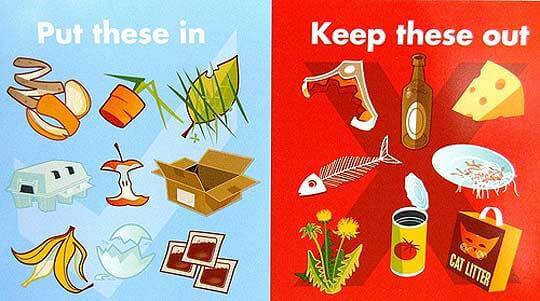
Photo via http://ow.ly/Pi6NX
When it comes to composting, you’ve probably heard that it’s good for the soil, but you may not know how to go about starting the process. After doing a little bit of research, I found that the process of composting is a relatively simple one. Plus, compost piles come in all shapes and sizes, so you can build one whether you have a small square of land or a spacious backyard. I started my compost pile a few weeks ago, and I add to it every day! Take a look at the basic steps of composting and learn some of the benefits of undertaking this project.
The Basics of Composting
The first step in building a compost pile is to find a bare piece of ground. This allows worms and other helpful insects access to the pile so they can aerate it. Next, find some twigs and put down a layer of them that’s about three inches deep. A layer of twigs gives your compost pile adequate drainage. Create your first layer of compost out of moist items. I suggest using fruit and vegetable peels as well as used tea bags and coffee grounds. The next layer should be made up of dry items such as leaves, newspaper, and cardboard pieces. Continue to alternate wet and dry items until you have several layers. The next step is to place grass clippings on top of the pile to supply it with nitrogen. Nitrogen is necessary to begin the process of breaking down these organic items. After building your compost pile, place a sheet of plastic over it so it retains moisture. You may want to water the pile with a watering can every so often or uncover it whenever there is a light rain. The idea is for your compost pile to remain moist but not take on too much water. Once every two or three weeks, use a shovel to turn over the contents of the pile. Once the layers start to decompose, turning the contents supplies oxygen to the lower parts of the pile. Once you’ve established a compost pile, you don’t have to concern yourself with adding items in wet and dry layers.

Photo via http://ow.ly/Pi92e
The Benefits of Composting
We know that as the items in a compost pile start to decompose, the process adds nutrients and moisture to the soil. But there are many other benefits of composting. For example, placing organic items such as fruits, vegetables, eggshells, and flowers in a compost pile means they won’t end up in a landfill. People who compost can decrease the amount of garbage they put out for pickup each week. Another benefit is that compost is a natural fertilizer that can be an alternative to using chemicals to fertilize a piece of property. In addition, parents who teach their kids how to compost are bringing up children who care about the health of the environment. There’s a good chance that their children will continue the practice of composting as adults.
More Items You Can Compost
- Apples
- Banana peels
- Carrots
- Chopped leaves
- Coffee filters
- Coffee grounds
- Grass clippings
- Newspaper
- Nut shells
- Oranges
- Paper towels
- Potatoes
- Small pieces of cardboard
- Tea leaves

Photo via http://ow.ly/Pi9KN
Please give some thought to starting a compost pile in your yard. Imagine the fun you’ll have watching all of the plants and flowers in your yard start to flourish!
![[Avas Flowers] Avas Flowers](https://www.avasflowers.net/newimg/avas-logo-new.png)

Wendy Nance
thank you for sharing with us, I believe this website genuinely stands out : D.